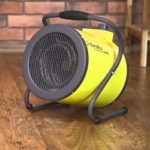Comparison of the work of the convector and the heat gun
When buying a home heater, the consumer is often lost in the choice: the range of heating equipment is quite extensive. These inexpensive devices will always help to cope with the cold in an unheated room or make the temperature more comfortable in a slightly heated space. On the market there are various on the principle of heating devices. Let's try to compare two types of devices and find out what is better to buy in each specific case: a convector or a heat gun?
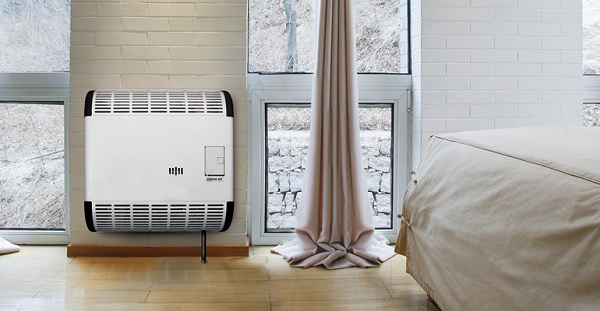
Content
Device and features of the convector
The range of modern convectors is divided into:
- compact wall models;
- dimensional floor;
- stationary, recessed into the floor;
- combined.
At its low cost, convectors can heat the air in the room well enough for a short period of time, setting a pleasant microclimate in it. They can work on heating almost constantly, maintaining stable temperature in a country estate or country house.
The essence of the work of the convector is to heat the air masses through the process of natural convention. The cold air penetrates the apparatus through the lower grille. Then the air flow passes through the heating element, is heated, and the warm air naturally exits through the grill located at the top of the product. Further, the heated air is evenly distributed throughout the room.
The efficiency of the convector is created due to the ingress of air to the heating element by the natural course of the air flow, without imparting acceleration through the blades of the fan. Since cold and warm air have different densities, this difference creates effective draft in the convector.
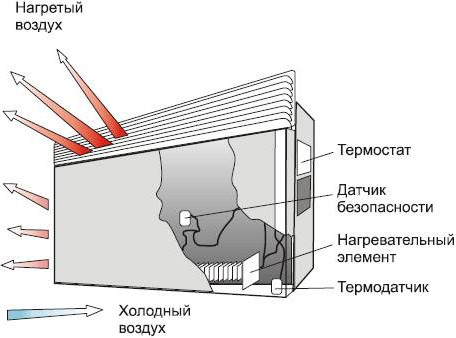
Advantages and disadvantages of convectors
Convector models have a number of undeniable advantages:
- lack of oxygen burning;
- reliable and trouble-free operation for a long time;
- a short period of time required for heating the air;
- several ways to install equipment;
- equipment adjustable thermostats, allowing you to smoothly set the desired temperature in the room;
- network connection option for several products;
- small overall dimensions;
- high degree of operational safety;
- low cost.
The main disadvantage of convector-type heaters is the low rate of heating the air to the specified parameters. This is due to the small possibilities of the phenomenon of a natural convention. But the convector is adjusted to a specific temperature with a graduation of 0.1 ° C. When the device reaches the set temperature, the convector shuts down or reduces the temperature, significantly reducing power consumption.
Convector Application
Most often convectors are used for heating. bath rooms. Do not forget that for a bathroom, as with a room with high humidity, the device must be marked with the moisture protection class IP24, as well as the level of protection class on electrical breakdown must be at least second.
It is not necessary to heat the body of the equipment, so it takes a few seconds to heat the air flow. The hull does not heat up to extreme temperatures, and the wall on which it is fortified warms up to a maximum of 45 ° C. This means that this type of heater can even be strengthened. on wooden panels.
The lower the converter is installed, the greater its heat transfer. In private houses with so-called French glass walls, it is standardly mounted on the floor. The device’s ability to cut off drafts makes it an ideal heater for living rooms.
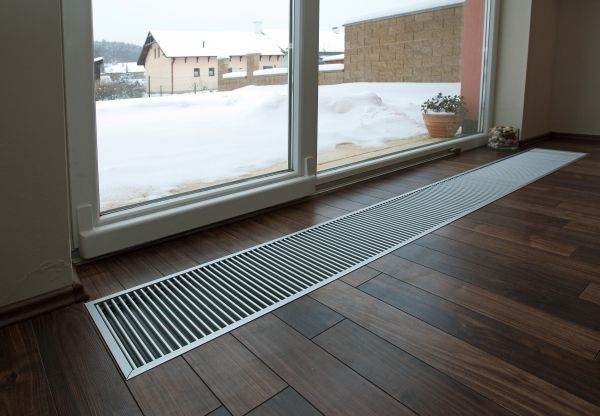
Convector mounted in the floor
The best practical results show devices with a rated power of 0.25 to 3.0 kW. In this case, it is necessary to carefully consider such a parameter as the temperature of the housing. Heaters with a cabinet temperature up to 50 ° C are suitable for the smallest room.
Often devices of this type are used in the system heating of country houses. In each room, one device is mounted, a common cable connects them to a single system, and the electronic processor in the programmer sets a temporary mode of operation.By slightly remounting the system, it is possible to achieve that each unit would work in an individual mode. Convectors can well protect a country house from freezing by setting the temperature in the automatic mode to 5-10 ° C.
If you do not like the presence of a cable in the house, a radio control system with a central base will come to the rescue.
Simplified power calculation for convector heating - 1 kW per 10 square meters (with a room height of not more than 3 meters). When buying convectors, you should pay attention to models of manufacturers with an established reputation in the market, for example, Electrolux, Polaris, Noirot, ADAX.
The device and features of the heat guns
Heat guns can carry out their work using gas or diesel as fuel. This approach can bring considerable savings when heating, say, a garage. But since we are comparing with a converter, we will consider heat guns powered from the mains. They may act as a heating element:
- spiral;
- TEN.
At the base of the heat gun is a fairly powerful fan, its task is to move warm air at high speed. The rated power of such equipment starts from 1 kW and can reach 20 kW. These devices are quite powerful and feature high performance.
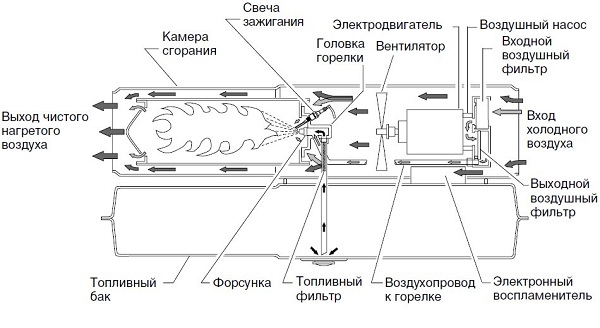
Device heat gun
From the materials used in the heating element depends on the efficiency of the device as a whole. So, if applicable ceramics, then the heat output is at least five times greater than that of any fan heater or convector. And the electricity consumption when using ceramic heating elements is much less than that of nichrome spirals.
Advantages and disadvantages of heat guns
The main advantage of these devices - their high strength and long life. They may be in operation for weeks. As a rule, their metal body is extremely reliable and eliminates any mechanical problems. In addition, heat guns are portable devices and very unpretentious to maintain. These qualities made popular their application in various fields.
The mode of operation of the fan without heating significantly increases the service life of the device.
But the heat gun ejects warm air into space only during its operation.If you suspend the operation of the device, the temperature in the room will begin to steadily decrease. Therefore, to maintain a comfortable temperature at all times significant power consumption.
Where heat guns are used
Heat guns are superior in power to all other heating devices of any type. Using a heat gun, it is possible for a very short period of time to effectively heat the room where it is located. This is the most favorable option for large sites. So in practice, they heat the premises under construction, production areas, repair spaces, greenhouses.
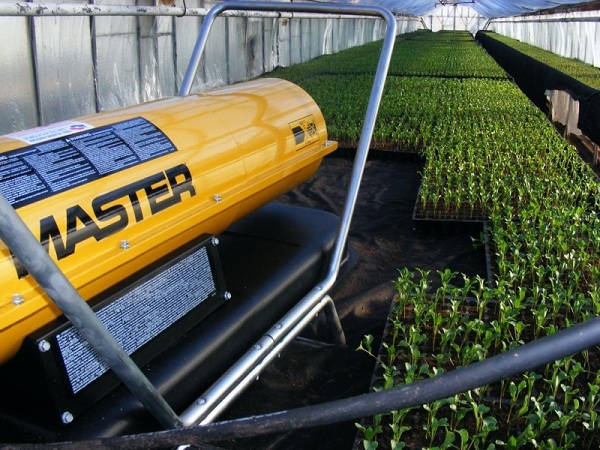
When the heat gun is operating, a significant noise effect occurs, greater than when other heaters are operating.
Calculation required power heat gun very simple - 3 kW of electricity per 100 cubic meters, but the room should have at least elementary insulation. An extensive range of models makes it possible to use them not only in industrial, but also in household premises. The devices of the following companies have proven to be most efficient and reliable in operation: Ballu, Dantex, Master.
Let's sum up
The choice of the heater depends on the functional features of the operated premises. For heating of living rooms, children's rooms, country cottages, it is better to use convectors, they work quietly and safely, you can leave them on for a long time.
If you get to the dacha only on weekends and you need to warm up the room quickly - the heat gun is an indispensable and reliable assistant. Also, heat guns are very convenient to use in construction and repair work, not only for heating, but, for example, if you need to quickly dry the wall. Well, for warehouses and garages - this is the first necessity.

/rating_off.png)






